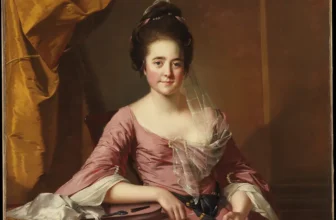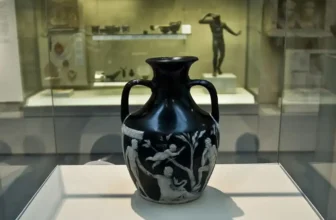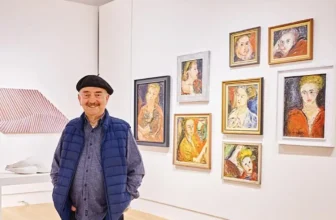Avoiding Fakes: How Experts Detect Art Forgeries
Inside the Techniques of Art Detectives and the Modern Fight Against Masterpiece Forgeries
Art forgeries have fascinated, deceived, and bankrupted collectors and museums for centuries. From the Renaissance to the digital age, fakes have slipped through the cracks of authentication systems, sometimes hanging in world-famous galleries for decades before being exposed. Yet behind every forgery scandal lies a fascinating world of forensic science, investigative artistry, and expert intuition , the hidden craft of art detectives.
This comprehensive guide explores how experts detect art forgeries, the tools and science they use, and the modern fight against fake masterpieces in a global art market worth more than $60 billion a year.
The High Stakes of Art Forgery
The art world thrives on authenticity. A painting attributed to Leonardo da Vinci, Van Gogh, or Picasso can be worth hundreds of millions, while a near-identical copy by an unknown artist might fetch only a few thousand. This enormous gap in value makes forgery extremely tempting , and detection absolutely vital.
Art forgery is not just a crime of deception; it’s a cultural wound. Every fake that infiltrates the market distorts art history, misleads scholars, and undermines public trust in museums and collectors. When forgeries are exposed, entire collections can collapse in value overnight.
For that reason, art authentication has evolved into a highly sophisticated discipline combining connoisseurship, chemistry, and cutting-edge technology.
Understanding Art Forgeries
Before diving into the detection methods, it’s essential to understand the different types of art forgeries:
Outright Fakes: Complete fabrications, often imitating the style of a famous artist.
Misattributed Works: Real paintings wrongly credited to a more famous name.
Altered Originals: Authentic works that have been doctored with fake signatures or added features.
Replica Forgeries: Copies produced to deceive, often aged or distressed to look old.
Digital Forgeries: In the modern era, digital reproduction tools can create nearly perfect images of original artworks, blurring the line between imitation and innovation.
Each type demands a different detection approach, combining historical research with advanced forensic analysis.
The Role of the Art Detective
Art detectives , a mix of art historians, chemists, forensic experts, and sometimes private investigators , specialize in identifying inconsistencies and exposing fraud. Their job is equal parts science and intuition.
They look for clues across multiple dimensions:
The materials: canvas, paint, varnish, and frame.
The methods: brushwork, layering, and artistic technique.
The provenance: ownership history and documentation.
The technology: spectroscopy, radiocarbon dating, and AI image analysis.
Let’s look at the major tools and techniques they use.
1. Provenance Research: Tracing the Artwork’s DNA
The first line of defense against forgery is provenance , the documented history of an artwork’s ownership, exhibition, and sales. A well-documented provenance can authenticate a piece beyond doubt.
However, forged provenance documents are a common trick. Expert forgers create fake receipts, exhibition catalogs, and even old gallery stamps to “prove” an artwork’s legitimacy.
How experts detect forged provenance:
Cross-referencing archives: Comparing claimed histories with museum records, auction results, and letters.
Linguistic analysis: Spotting anachronistic language or letterheads that didn’t exist at the time.
Paper forensics: Examining ink, aging, and watermark inconsistencies.
A forged painting can often be exposed when its paper trail doesn’t align with historical reality.
2. Scientific Analysis of Materials
a. Pigment and Paint Analysis
One of the most powerful tools in detecting fake art is scientific pigment analysis. Every pigment has a historical origin , some were invented centuries after an artist’s death.
For example, a supposed 17th-century painting found to contain titanium white (invented in the 20th century) is an instant red flag.
Techniques include:
X-Ray Fluorescence (XRF) – Reveals the elemental composition of pigments.
Raman Spectroscopy – Identifies specific molecules within paint samples.
Infrared Reflectography – Reveals underdrawings or hidden sketches beneath the paint.
These methods are non-invasive and can detect chemical signatures invisible to the naked eye.
b. Canvas and Wood Dating
Experts analyze the canvas, panel, or frame to determine if the materials correspond with the claimed era.
Carbon-14 Dating: Used to estimate the age of organic materials like wood and linen.
Dendrochronology: Tree-ring dating helps confirm whether a wooden panel could have existed in an artist’s time.
Fiber Analysis: Identifies synthetic fibers or binders that didn’t exist historically.
Even a masterpiece-quality forgery can fail this test if its materials are anachronistic.
3. Ultraviolet and Infrared Imaging
Under ultraviolet light, varnishes, pigments, and touch-ups reveal hidden layers. UV fluorescence can expose restorations, retouches, and later additions invisible under normal lighting.
Infrared reflectography, on the other hand, allows experts to see beneath the surface. Many great artists sketched preliminary drawings before painting , a process called underdrawing. If a painting supposedly by Rembrandt lacks such preparatory work, suspicion arises.
Through these imaging techniques, experts can see the “ghost” beneath the painting , the artist’s hidden hand or the forgery’s concealed deceit.
4. Microscopic Brushstroke Analysis
Every artist’s hand is unique. Under magnification, brushstrokes reveal patterns of motion, pressure, and rhythm that act like fingerprints.
Modern software and machine learning algorithms can now analyze these patterns at scale. By comparing thousands of verified artworks, computers can detect statistical anomalies that even seasoned experts might miss.
For instance:
Texture analysis can distinguish between genuine oil brushwork and the flat uniformity of modern reproductions.
AI pattern recognition can flag inconsistencies in brushstroke curvature or pigment layering.
This method merges traditional connoisseurship with digital precision , a new era of AI-assisted authentication.
5. Signature and Style Analysis
A signature alone rarely guarantees authenticity, yet it’s often the first thing a buyer notices. Forgers frequently attempt to replicate an artist’s signature or even use authentic signatures cut from genuine letters.
Experts use handwriting analysis and microscopic comparison to identify discrepancies.
But beyond the name, an artist’s style , composition, palette, and subject choice , offers deeper clues. Stylistic inconsistencies, such as anachronistic themes or techniques, often expose forgeries.
For example:
A “Picasso” using colors he abandoned decades earlier.
A “Monet” painted on industrial canvas unavailable in 19th-century France.
A “Pollock” whose drips show mechanical uniformity, not the organic chaos of the original.
6. Digital Forensics and AI Authentication
The digital revolution has transformed art detection. High-resolution imaging, data analytics, and artificial intelligence allow experts to scrutinize every brushstroke in microscopic detail.
AI-based authentication systems like Art Recognition and Art Analytics analyze thousands of data points per square inch, comparing texture, brushwork, and composition against verified databases.
AI can:
Detect pixel-level irregularities in digital scans.
Identify algorithmic “patterns” typical of known forgers.
Learn the unique fingerprint of an artist’s style.
Although not infallible, AI has become an indispensable companion in the fight against forgeries, often serving as a second opinion that confirms or challenges human judgment.
7. Chemical and Molecular Forensics
Beyond pigments, scientists analyze binding media, varnishes, and resins to detect chemical anomalies. Gas chromatography and mass spectrometry can determine if a painting’s materials are centuries old or freshly mixed.
Binding analysis reveals whether the paint used egg tempera (typical of Renaissance art) or modern acrylics.
Varnish dating can expose attempts to artificially age paintings using chemicals, smoke, or heat.
These molecular fingerprints tell a story of their own , one that can’t easily be forged.
8. Forensic Accounting and Market Analysis
Sometimes the forgery trail isn’t found in the paint, but in the money. Art detectives often collaborate with financial investigators to trace suspicious transactions.
Red flags include:
Unusually fast resales at inflated prices.
Inconsistent auction records.
Middlemen and shell companies concealing ownership.
By following the paper trail of money rather than the artwork itself, investigators often expose forgery rings and laundering operations within the global art market.
9. Famous Art Forgery Scandals and What They Taught Us
Throughout history, forgery scandals have reshaped how the art world authenticates works.
Han van Meegeren – The “Vermeer” Forgeries
In the 1930s and 40s, Dutch painter Han van Meegeren fooled the world by creating fake “Vermeers.” He used old canvases and baked them to simulate aging. His deception was so convincing that even top experts authenticated his works , until scientific testing exposed modern materials in his paints.
Wolfgang Beltracchi – The Master of Style
German forger Wolfgang Beltracchi created over 300 fake paintings attributed to artists like Campendonk and Léger. His downfall came from one tiny error: he used a white pigment containing titanium, which did not exist in the supposed era of the work.
Knoedler Gallery Scandal
One of America’s most prestigious galleries, the Knoedler Gallery, sold dozens of fake Abstract Expressionist paintings for over $80 million. Experts later found modern paints and false provenance documents, leading to lawsuits and the gallery’s closure.
Each case reinforced a vital truth: even the most skilled eye can be deceived without scientific corroboration.
The Modern Fight Against Art Forgeries
The battle against art forgery is now global and interdisciplinary. Museums, auction houses, and private collectors collaborate with forensic labs and law enforcement to authenticate works.
a. International Collaboration
Organizations like INTERPOL, UNESCO, and the Art Loss Register share data on stolen and forged art.
Advanced databases store digital fingerprints of verified artworks, helping prevent resale of known fakes.
b. Blockchain and Digital Provenance
Blockchain technology is emerging as a revolutionary tool for provenance tracking. By recording every transaction in an immutable digital ledger, blockchain ensures an artwork’s history cannot be tampered with.
NFTs (non-fungible tokens) are also being used to link digital certificates of authenticity to physical artworks.
c. Forensic Art Labs
Universities and museums now host dedicated art forensics labs, combining chemistry, physics, and art history. The National Gallery in London, for example, operates one of the most advanced analytical imaging centers in the world.
d. Public Awareness and Education
Art buyers are increasingly educated about due diligence. Authentication reports, provenance checks, and scientific analyses are now standard practice in high-value transactions.
In short, the fight against forgeries is no longer reactive , it’s proactive, preventative, and technologically empowered.
How Collectors Can Avoid Fake Art
Whether buying a $5,000 print or a $5 million oil painting, collectors can protect themselves with a few simple steps:
Request full provenance documentation. Verify ownership history with multiple independent sources.
Ask for scientific authentication. Demand technical analysis reports from recognized laboratories.
Consult multiple experts. Independent opinions reduce bias and oversight.
Beware of “too good to be true” deals. Forgeries often exploit greed or haste.
Use digital registries. Check works against databases like the Art Loss Register or blockchain-based platforms.
In the modern market, trust must be verified, not assumed.
The Psychology of Forgers: Why They Do It
Art forgers are often talented artists themselves, driven by resentment, greed, or a desire to expose the elitism of the art world.
Han van Meegeren famously claimed he forged Vermeers to prove he could paint as well as the masters. Wolfgang Beltracchi said his forgeries were “artistic experiments.”
This psychological element adds complexity , forgers often see themselves not as criminals but as misunderstood geniuses, creating a cat-and-mouse game between deception and detection.
The Future of Art Authentication
The future of art authentication lies at the intersection of AI, blockchain, and materials science. Soon, every artwork may have a digital DNA , a unique identifier based on microscopic scans and chemical signatures, stored permanently in decentralized ledgers.
In this future, forgers will find it increasingly difficult to fake not just the art itself but its scientific and digital trail.
However, as technology advances, so do the forgers. The battle will continue , a creative duel between deception and detection that reflects the very essence of human ingenuity.
The Art of Truth
The world of art forgery is a mirror of the art world itself , brilliant, deceptive, and endlessly fascinating. Detecting fake art is no longer a matter of intuition alone; it’s a collaboration between art historians, scientists, and digital innovators.
As techniques evolve, the art detective’s role becomes ever more crucial , not just to expose frauds, but to preserve the integrity of human creativity.
Because in the end, authentic art is more than paint on canvas , it’s a genuine expression of truth, history, and emotion that no forgery can truly replicate.




